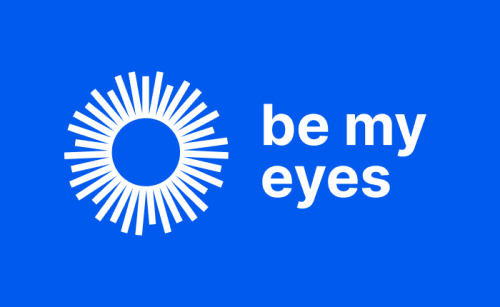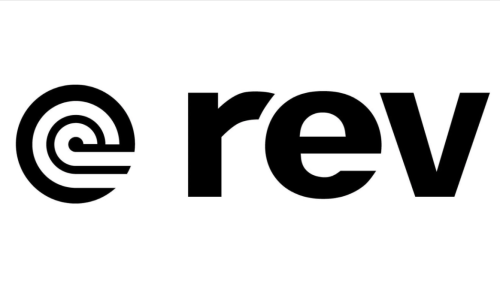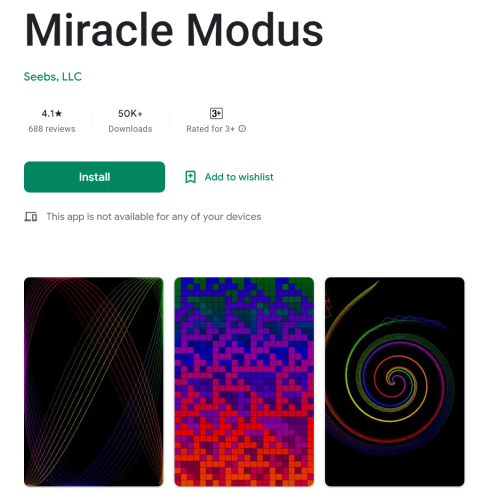
|

Smiling Mind.
Smiling Mind is an Australian non-profit organization with a free app that focuses on mental health and wellbeing through mindfulness practices.
Smiling Mind's target audience is broad, ranging from children to adults. They offer programs specifically designed for schools and even have some meditations available in Aboriginal languages.
The app itself is packed with features to help users build mental fitness and resilience. It includes guided meditations, mindfulness exercises, and tools to track mood and progress. Smiling Mind's approach is based on positive psychology, with the aim of reducing stress, anxiety, and depression while improving sleep, focus, and relationships.
Use the highlighted links to go to the application for Android and for Apple.

AccessNow is a mobile phone app that people can use to discover accessible places around the world (including Adelaide), rate the accessibility of places with tags and descriptions, and filter search results to discover places with specific accessibility features.
You can search for accessible places in particular areas, such as the city or a specific suburb such as Unley. A number of icons will appear on a map of the area, which indicate a green-coloured thumbs up for good accessibility, an orange-coloured cone for warnings about accessibility such as only having partial accessibility, and a red-coloured thumbs down for poor accessibility or no accessibility. The details about the destination/place may include whether it has accessible parking, an alternative entrance, availability of accessible bathrooms, having automatic doors, elevator/lift, ramp, stairs, sensory needs such as light sensitivity and quiet spaces/areas, and lowered tables or counters.
You can create a profile to then be able to rate places using the app. You can also set your location and search for accessible places nearby. You can use the app to research places you can go that are accessible, such as cafes, pubs and restaurants, clothing stores and sporting venues. You can even research places overseas before planning your next holiday!
However, please be mindful that many of the ratings are based on people reviewing destinations/places 4-8 years ago. So the accessibility may be different now.
If you use Apple please click here to go to the app.
If you use Android please click here to go to the app.

Chatter is an interactive podcast experience.
This is an Artificial Intelligence (AI) service. It is currently free to use.
It presents news articles as an interactive podcast by using voice commands.
To use it, you need to ensure your phone is unlocked and you can then verbally ask for news on a particular topic. You can interrupt the presenter at any time and ask them to change topic, skip an article, get the latest news, and start discussing topics, and a range of other relevant commands. It is like having a conversation with another person!
This application would be particularly useful for people with vision difficulties to access news in an accessible format.
You can access Chatter through the following website https://chatter.hume.ai/

Be My Eyes is a free mobile app that connects blind and low-vision people with sighted volunteers who can provide visual assistance over a live video call. The app is available in over 180 languages and has over 1 million volunteers worldwide.
Be My Eyes is easy to use. Blind and low-vision users simply open the app and tap a button to request a connection. A sighted volunteer will then answer the call and provide assistance with whatever task the user needs help with. This could include anything from reading labels on food containers to helping with navigation or describing the contents of a room.
“Be My Eyes has made me feel so much more comfortable and secure knowing that if I should need sighted help, I’ll be able to get it.”
Here are some of the pros and cons of Be My Eyes:
Pros:
- Free to use.
- Available in over 180 languages.
- Over 1 million volunteers worldwide.
- Easy to use.
- Volunteers are friendly and helpful.
Cons:
- There may be a wait for a volunteer to answer a call, especially during peak hours.
- Some volunteers may not be familiar with all aspects of accessibility.
- The app relies on a strong internet connection.
Summary:
- Be My Eyes is a great way to connect with other people who live with blindness or have low vision. There is a community forum where users can ask questions, share advice, and support each other.
- Be My Eyes also offers a business solution that helps companies provide better customer service to blind and low-vision customers.

Rev: Record & Transcribe is a service that can help people living with disabilities in a variety of ways. For example, it can be used to:
- Transcribe audio recordings into text. This can benefit people who are deaf or hard of hearing, as it allows them to access information that is only available in audio format.
- Create captions for videos. This allows people to watch videos that are not captioned, making a lot more content accessible. It can also be helpful for people who are learning English, as they can read the captions while they watch the video.
- Generate transcripts of live events. This is helpful in many settings but for people who are unable to attend a live event, such as a lecture or a meeting. They can listen to the transcript instead, which can be helpful for following along and taking notes.
- Create transcripts of conversations. People who have difficulty remembering what was said in a conversation or just needed a record, would greatly benefit from this. They can listen to the transcript later to remind themselves of what was discussed.
- Transcribe medical records. People who have difficulty reading their medical records, are able to get a better understanding of crucial information. People are able to listen to the transcript instead, which can be helpful for understanding their condition and treatment options.

Miracle Modus
- A mobile app that uses calming visuals and sounds to help people with sensory overload.
Here are some additional details about Miracle Modus:
The app was created by Seebs LLC, a company founded by an individual living with autism. The creator of the app found that repetitive patterns and sounds helped to calm him down when he was feeling overwhelmed, so he created the app to help others who experience sensory overload. The app is designed to be customizable, so users can choose the visuals and sounds that they find most soothing. They can also adjust the brightness and volume of the app. The app is available for free on the App Store (Apple) and Google Play (Android).
Who is it for?
The app is designed for anyone who experiences sensory overload.
- The app has a universal design but has features that greatly benefit people living with autism, ADHD, anxiety.
How does it work?
Features a variety of calming visuals and sounds, including:
- Hypnotic rainbows.
- Soft bells.
- Soothing patterns.
- Gentle music.
Users can customize the app to create their own calming experience.